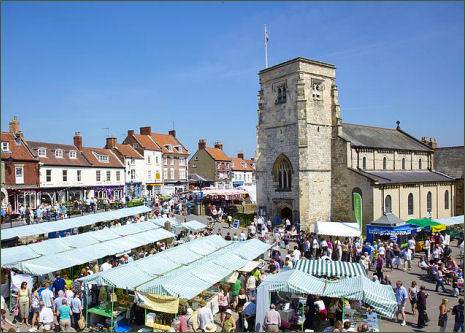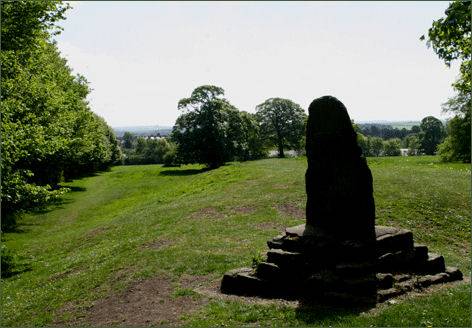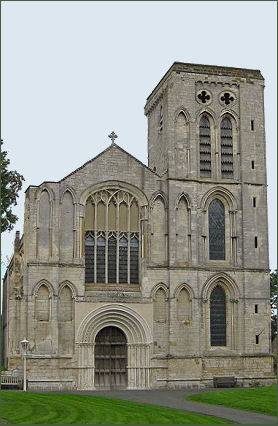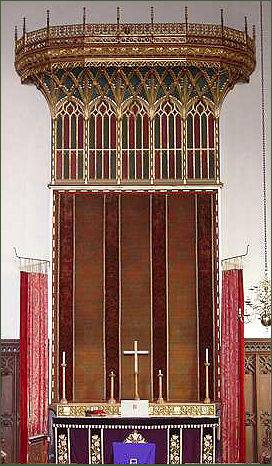Malton
OS grid reference:- SE 788 722
 The market town of Malton is situated in Ryedale and lies to the north of the River Derwent on the historic boundary between the North and East Ridings of Yorkshire. The town is the commercial and retail centre of the local area.
The market town of Malton is situated in Ryedale and lies to the north of the River Derwent on the historic boundary between the North and East Ridings of Yorkshire. The town is the commercial and retail centre of the local area.
Malton holds a celebrated food festival, as well as having a monthly food market, Malton Cookery School, traditional food shops and 'Made in Malton' artisan producers leading to it sometimes refered to as "Yorkshire's Food Capital".
The town centre contains small traditional independent shops as well as the usual big high street names. Malton's busy market place has recently become a meeting area with a number of coffee bars and cafés opening all day. Malton holds a market every Saturday, and a farmers' market once every month. The town has a war memorial and several historical churches.
The town boasts connections to the celebrated Victorian author Charles Dickens, who regularly visited the area to see his friend Charles Smithson. Dickens also wrote his famous novel "A Christmas Carol" while staying in Malton. There have been recent revivals of Dickens-related festivals in the town.
The earliest building at Malton occured in around 70 AD, when the Roman auxiliary fort of Derventio, sometimes known as Derventio Brigantium, was constructed by the Roman governor Agricola at around the same time as that at Eboracum (York).
The site was established on the north bank of the River Derwent. The original fort was constructed in timber, with the wall being rebuilt in stone in the early second century. A large civilian settlement grew up alongside the fort, on the south bank of the river. A single Roman cavalry unit, the Ala Gallorum Picentiana was posted at Derventio. The site continued to be occupied throughout the four centuries of the Roman occupation of Britain, and is notable for the manufacture of jet jewellery.
 The first archaeological excavations at the site of Derventio were carried out in the 1930s by Philip Corder and John Kirk. Finds from this excavation formed the core collection of the Malton Museum. A further series of excavations between 1949 and 1952 was undertaken by the Ministry of Works. In the civilian settlement excavations uncovered a road, several buildings and a mosaic. Timber and stone structures were identified during further excavations at Derventio which were carried out in 1970 by Leslie Peter Wenham. The original earthworks may still be seen in the centre of the modern town in the area known as 'Orchard Fields'.
The first archaeological excavations at the site of Derventio were carried out in the 1930s by Philip Corder and John Kirk. Finds from this excavation formed the core collection of the Malton Museum. A further series of excavations between 1949 and 1952 was undertaken by the Ministry of Works. In the civilian settlement excavations uncovered a road, several buildings and a mosaic. Timber and stone structures were identified during further excavations at Derventio which were carried out in 1970 by Leslie Peter Wenham. The original earthworks may still be seen in the centre of the modern town in the area known as 'Orchard Fields'.
In the eleventh century a motte-and-bailey Norman castle was constructed by the influential de Vesci family over the west corner of the Roman fort. The castle was demolished in the seventeenth century when a mansion house was built on the site by Lord Eure.
Malton Museum, Ryedale's major archaeological museum houses a nationally important collection of Roman artefacts, mainly from the Derventio Roman fort and town, and from Langton village, which lies a few miles away, Roman finds from Malton can also be seen in the Yorkshire Museum. The museum also holds archaeological material of all periods from across Ryedale. The collection includes objects relating to the region's prehistoric past and to the later history of Malton and Norton, including racing, brewing, trade and other important aspects of local life. Malton Museum is now in the Subscription Rooms, Yorkersgate, Malton.
Eden Camp, situated on the outskirts of the town, is a multi-award winning Modern History Theme Museum housed in the grounds of an original World War Two prisoner of war camp. Flamingo Land, a theme park, Briain's most visited zoo, and resort is located at Kirby Misperton about 7 miles from Malton.
Scampston Walled Garden near Malton is a stunningly beautiful contemporary garden, quite unlike any other. Designed by the renowned Dutch plantsman, Piet Oudolf, and featuring modern, perennial meadow planting alongside more traditional areas, the garden is open to the public from Easter to October every year.
The route of The White Rose Way, a long distance trail from Leeds to Scarborough, passes through the town.
Malton Priory

 Malton Priory, at Old Malton is situated near to the town of Malton. The priory was founded as a monastery of the Gilbertine Order by Eustace fitz John, a powerful magnate in northern England and lord of Malton Castle, he was also a personal friend of King Henry I.
Malton Priory, at Old Malton is situated near to the town of Malton. The priory was founded as a monastery of the Gilbertine Order by Eustace fitz John, a powerful magnate in northern England and lord of Malton Castle, he was also a personal friend of King Henry I.
The Gilbertine Order, the only native British Monastic Order, was founded in around 1131 by Saint Gilbert of Sempringham in Lincolnshire.
Eustace Fitz John founded both Malton Priory and Watton Priory around 1150, some sources state that this was done as an act of penance for his support of the Scots in the Battle of the Standard.
A previous church, recorded in the Domesday Book of 1086, once occupied the site. The new Priory was endowed with farmlands and churches in the surrounding area.
During the reign of King Henry VIII, William Todd, Prior of Malton was accused of taking part in the Pilgrimage of Grace, a northern rebellion against the king's religious policies.
Malton Priory was dissolved in December 1539 and the eleven canons then resident in the Priory were pensioned off. Following the Dissolution of the Monasteries, the site was purchased in 1540 by Robert Holgate, the former master of the Gilbertine Order, who was then Bishop of Llandaff. In 1545 Holgate became Archbishop of York. He founded three grammar schools in Yorkshire, including Malton School.
The priory's main surviving building is the Priory Church of St. Mary's, which now serves as a parish church. It is the only church of the Gilbertine Order still in regular use. At the rear of the building are a number of carved stones which include Saxon and Anglo-Scandinavian cross-heads, a small Roman altar and fragments from the monastic buildings recovered in excavations. There is also tomb slab which dates to the thirteenth century, probably intended for a prior,and its cross design incorporates the crutch motif of the Gilbertine order.
Over the proceeding centuries, the monastic buildings were used as a source of building material, stone taken from the priory can be seen in buildings throughout Old Malton. The entire east side of the old priory has now disappeared, as have the cloisters, dormitory, refectory and kitchens. They once stood to the south of the church, on the land that stretches towards the River Derwent.
